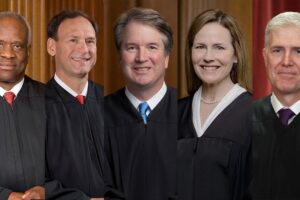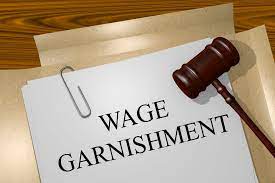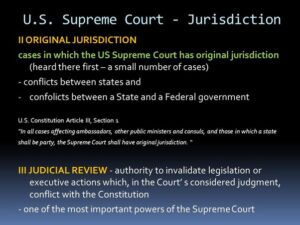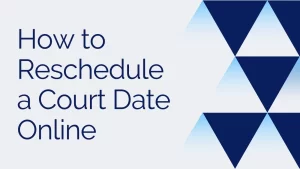What is a Dual Court System
Understanding the Dual Court System
The United States has a unique judicial system that features dual courts—parallel systems of courts at both the federal and state levels. This dual court structure traces back to the early days of the republic when the Constitution was drafted.
The Roots of the Dual Court System
When the U.S. Constitution was being written, the states were hesitant to give too much power to a new national government. As a compromise, the framers devised a federal system that preserved states’ authority. This federalist model allowed states to keep their own independent court systems to handle state laws and most day-to-day legal matters. At the same time, the Constitution also authorized Congress to establish a federal judiciary to hear cases involving national laws or issues spanning multiple states.
This shared judicial authority created the basis for today’s complex dual court system—dual judicial structures operating at both the federal and state levels simultaneously within the U.S. legal framework. The dual courts have intersected, overlapped, and evolved together over the past two centuries.
Structure of the Courts: The Dual Court and Federal Court System
Comparing Federal & State Courts
The U.S. has dual court systems at the federal and state level. This complex judicial structure is a direct result of federalism—the sharing of power between the national and state governments. Both court systems play vital roles in interpreting laws and delivering justice. However, there are several key distinctions between federal and state courts impacting their jurisdiction, judicial selection methods, rulings, and appeals processes.
Overview of federal vs. state courts
While federal and state courts are part of the same overall system serving the American public, they have notable structural, functional, and procedural differences.
State Court Systems
While federal courts grab headlines, state courts carry the bulk of judicial work in America. Over 90 percent of all U.S. court cases are filed at the state level each year. These include both civil disputes and violations of state criminal laws.
The Federal Court System
Compared to vast state judiciaries, federal courts handle a smaller portion of U.S. cases based on federal jurisdiction. Still, their rulings often garner extra attention given the national scope.
Court structure
Structure of the Federal Courts
The federal courts comprise three main levels:
- U.S. District Courts (94 judicial districts) – federal trial courts
- U.S. Courts of Appeals (13 circuits) – first level appeal courts
- U.S. Supreme Court – final court of appeal, establishes nationwide precedents
Specialty federal courts like U.S. Tax Court and U.S. Court of International Trade have specific jurisdictions. U.S. Bankruptcy Courts operate as units inside other federal district courts.
Structure of the state courts
Since state courts were created by the states themselves, each state court system is unique. But some common elements emerge:
- Most feature three basic tiers—local trial courts, intermediate state appeals courts, and a state supreme court at the top. However, specifics like judicial selections and jurisdictional boundaries vary.
- Unified vs bifurcated structures: Some states have separate courts to hear civil vs criminal cases, while about half use a single, unified system.
- Specialty courts like family courts and traffic courts may have specific jurisdictions.
- Caseloads, judicial resources, and backlogs differ widely between crowded urban courts and smaller rural ones.
Selection of judges
The federal court system
Federal judges are nominated by the President and confirmed by the Senate per Article II of the Constitution. Once appointed, they have lifetime tenure unless impeached. This gives them independence from political pressure.
The state court system
Conversely, most state judges are elected, sometimes after initial appointment. Requiring judges to run for office makes them more accountable to constituents but more susceptible to political influences. A minority of states give high court judges lifetime or long-term appointments comparable to the federal model.
Types of cases heard
The federal court system
Federal courts oversee:
- Constitutional issues
- Federal laws and treaties
- Maritime law
- Bankruptcy
- Patent and copyright
- Cases between states or involving foreign diplomats
As authorized by Congress and the Constitution, federal courts address matters of statewide and national importance.
The state court system
State courts handle:
- Contract disputes
- Tort cases
- Property cases
- Family law
- Traffic violations
- Most violent crimes and thefts
- Juvenile cases
- Probate of estates
Daily legal issues facing ordinary Americans generally start in state courts, with federal courts playing more of an appellate role.
Jurisdiction of the Courts: State vs. Federal
| State Courts | Federal Courts |
|---|---|
| Hear most day-to-day cases, covering 90 percent of all cases | Hear cases that involve a “federal question,” involving the Constitution, federal laws or treaties, or a “federal party” in which the U.S. government is a party to the case |
| Hear both civil and criminal matters | Hear both civil and criminal matters, although many criminal cases involving federal law are tried in state courts |
| Help the states retain their own sovereignty in judicial matters over their state laws, distinct from the national government | Hear cases that involve “interstate” matters, “diversity of citizenship” involving parties of two different states, or between a U.S. citizen and a citizen of another nation (and with a damage claim of at least $75,000) |
Key Differences Between State and Federal Courts
Types of Cases Heard
- State courts – most criminal prosecutions and civil disputes (90% of all cases)
- Federal courts – specialized cases involving national laws or interests (10% of cases)
Sources of Law
- State courts – try cases based on state constitutions, laws passed by state legislatures, governor executive orders, regulations by state agencies, voter-approved initiatives.
- Federal courts – adjudicate disputes based on U.S. Constitution, federal statutes, regulations by federal administrative agencies, executive orders.
Jurisdiction
Federal courts address issues arising under federal laws and the Constitution, or matters extending beyond any one state’s borders. State courts handle state laws plus most civil and criminal suits between residents of that state.
Judicial Selection
- State judges – Appointed by governors in some states, directly elected by voters in others
- Federal judges – Nominated by the president, confirmed by the U.S. Senate
Rulings and appeals
Judgments of state courts are final regarding state laws but can be appealed to federal courts on constitutional grounds. Federal courts have the final say regarding federal law and the Constitution.
How the Dual Court System Works
There are complex intersecting pathways between the state and federal sides.
Typical Pathway of Cases
- Many cases start in state courts based on state laws or civil disputes. Those invoking federal laws/rights may get appealed up through the federal system.
- Cases based on federal laws often originate in U.S. District Courts. Appeals go up through federal Circuit Courts, and maybe to Supreme Court.
Intersections Between the State and Federal Systems
Despite their distinct roles, federal and state courts interact closely within America’s judicial framework:
- State courts must apply federal laws and protect rights guaranteed by the U.S. Constitution. Any violations of federal law by state courts can be appealed up to the Supreme Court.
- Federal courts hearing issues of federal law must still consider how state courts have applied and analyzed relevant state statutes.
- When hearing constitutional challenges to state laws, federal courts give great weight to how state courts have previously interpreted those state laws.
- Single incident could prompt both state charges and federal charges
- State cases can raise federal constitutional issues when appealed
- State high court rulings appealed to SCOTUS can be overturned
Example: Miranda v. Arizona
When Ernesto Miranda was convicted of kidnapping/rape in Arizona state courts based on his confession, his public defender appealed up to the U.S. Supreme Court. They argued his Fifth and Sixth Amendment rights were violated by police interrogations.
The Supreme Court overturned his conviction, establishing the “Miranda rights” precedent requiring suspects be informed of their rights. However, Miranda was retried and re-convicted using other evidence in Arizona courts without his confession.
This shows how the dual court system intersects—the state courts determined guilt on state charges, while federal courts weighed the constitutional rights issues prompted by police procedures.
Implications of the Dual System
Citizens can have pros and cons navigating the complex dual court structure.
Benefits for Citizens
- More than one system to get justice – state and federal options
- Federal courts protect constitutional rights not secured in state courts
- Variations between states’ judicial systems increase access, alternatives
Challenges and Variations
- Inconsistent rulings for similar cases across different state courts
- Varying state laws, attitudes lead to uneven application of justice
- Contradictions between liberal state laws (e.g. marijuana) and national prohibition
The dual structure aims for balance but still wrestles with consistency across judiciaries handling 90% (states) vs. 10% (federal) of cases. Reforms strive to improve uniformity.
Conclusion
For better or worse, the complex dual court model remains deeply ingrained in America’s DNA, tracing back to founding-era federalism debates. While intricacies challenge citizens and lawyers alike, in the end its multiplicity of pathways toward justice continue providing alternate routes to resolve disputes for a diverse, divided nation still struggling toward the ideal of “equal justice under law.”
Summary of distinctions
While federal and state courts collectively uphold the rule of law throughout the U.S., they have divergent structures, selection methods, jurisdictions, rulings, and appeals processes stemming from America’s federalist model of shared governance. Appreciating these distinctions is essential to comprehending the cohesive yet multifaceted nature of the national judicial system.
Significance of federalism
By dividing judicial authority, federalism enables federal courts to focus on matters of nationwide importance and state courts to address localized issues. This allows each system to function efficiently within its respective sphere of legal oversight, coordinating as needed to protect constitutional rights and dispense justice consistently across America.
FAQs
What is the dual court system?
The dual court system refers to the parallel court structures operating simultaneously at both the federal level and the state level within the U.S. legal framework. More than 90% of cases fall under states’ jurisdiction.
How are state and federal courts different?
Key differences are in types of cases heard, sources of law used for rulings, and judicial selection methods. States hear more routine civil and criminal disputes under state laws. The federal system deals with more complex national issues.
What does the Miranda case reveal about the dual courts?
When Ernesto Miranda’s conviction in Arizona state courts was overturned by the Supreme Court in 1966 for violating his rights, it showed how state courts determine guilt based on state laws while federal courts weigh constitutional issues prompted by police procedures.
Why are there so many differences among state court systems?
Since state courts were created by the states themselves under federalism, each state crafted its own unique judicial system structure and jurisdictional boundaries, leading to inconsistencies.
What benefits does the dual court structure provide?
Citizens have more than just one court system ready to protect their rights. Having dual court options, as well as variations among state systems, increases Americans’ potential to resolve disputes through alternate judicial pathways.
Q: How does the dual court system impact individual rights?
A: The dual court system provides individuals with multiple avenues to safeguard their rights, offering diverse forums for legal redress.
Q: What role does the U.S. Supreme Court play in the dual court system?
A: The U.S. Supreme Court serves as the final court of appeal, ensuring uniformity in the interpretation of federal law and constitutional rights.
Q: How do state courts contribute to the democratic process?
A: State courts enhance democracy by providing varied alternatives and arenas for political access, accommodating diverse interests.
Q: Can cases move between state and federal courts?
A: Yes, cases may transition between state and federal courts based on factors such as federal law violations or constitutional questions.
Q: What challenges arise from variations in state laws, especially in cases like marijuana legislation?
A: Varying state laws, as seen in marijuana legislation, can lead to disparities in legal treatment and conflicts between state and federal jurisdictions.
What types of cases do federal courts handle?
Federal courts have jurisdiction over cases involving the U.S. Constitution, federal laws/treaties, activities across state lines or national borders, or disputes between states. Specific examples include civil rights cases, antitrust suits, patent/copyright cases, bankruptcy filings, and admiralty law.
How are federal judges selected?
Federal judges are nominated by the President and confirmed by the Senate. Once appointed, Article III judges serve lifetime tenures assuming good behavior, giving them independence from changing political winds. Federal judges can only be removed through Congressional impeachment for serious misconduct.
Can a state court judgment be appealed to federal courts?
Yes, state court decisions regarding federal constitutional issues can be appealed up to federal courts. If the federal courts find that the state court judgment violates the U.S. Constitution or federal law, they can overturn it. However, federal courts give considerable deference to state court decisions interpreting state law.
What qualifies someone to become a federal judge?
While formal requirements are minimal concerning age, residency, and legal experience, federal judges have generally served as judges at the state level, legal scholars/professors, or as decorated attorneys with outstanding records over lengthy careers. Nominees should demonstrate legal mastery plus sound judgment, unbiased temperament, and impeccable integrity.
Do federal and state courts ever share jurisdiction over the same cases?
Yes, the U.S. legal system sometimes allows “concurrent jurisdiction” so matters can be heard in both federal and state courts. Examples include particular contract, property, tax, trademark, and copyright lawsuits arising under provisions of both federal and state law. Plaintiffs then can choose the most favorable venue to have their case tried.








